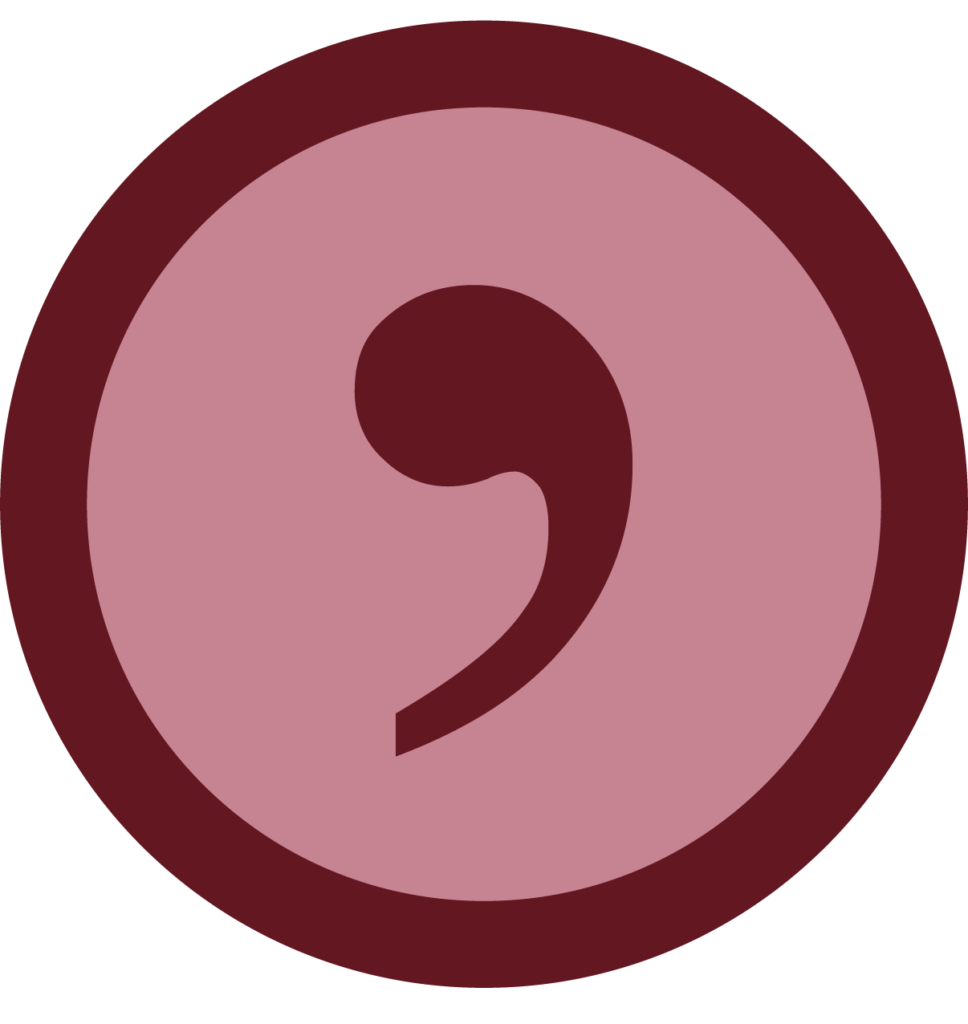Learning Objectives
- Demonstrate the standard uses of apostrophes to show possession
- Demonstrate the standard uses of apostrophes in contractions

Figure 1. An apostrophe.
With possessives, the apostrophe is used in combination with an s to indicate that a word literally or conceptually possesses what follows it. The easy way to think about this is to use the “of” test. Try rewording the sentence and substituting the apostrophe with the word of.
Singular words, whether or not they end in s, are made possessive by adding an apostrophe + s. For example:
- a student’s paper = the paper of a student
- one hour’s passing = the passing of one hour
For plural words, we typically indicate possession simply by adding the apostrophe without an additional s. However, for a plural that does not end in an s (e.g., bacteria), we would add an apostrophe + s. For example:
- Illinois’s law or Illinois’ law = the law of Illinois
- interviewees’ answers = the answers of the interviewees
- her professors’ office = the office of her professors (an office shared by two or more of her professors)
- her professor’s office = the office of her professor (just one!)
Writers sometimes mistakenly add apostrophes to make words plural, but this is not how the apostrophe is used; the apostrophe is used to show possession or ownership.
Try It
Take a minute to test your knowledge about apostrophes.
If you just mean to make a word plural, you should not add an apostrophe. Here is an example of incorrect usage:
- The student’s planned to buy their books but played Xbox instead.
Here, you would not use an apostrophe because there is no ownership being established. You can double-check this example and see that this use of the apostrophe would not pass the “of” test:
- The planned of the students just does not make sense.
The sentence above would not pass the test and should read as follows:
- The students planned to buy their books but played Xbox instead.
Plural Possessives
Making plural words possessive can be confusing at times because we so often add an s to a noun to make it plural. All of those s’s can be a little overwhelming, but the rules are pretty simple:
To make plural nouns that do not end in s possessive, add ’s.
- the children’s scary books
- the mice’s tiny tails
To make plural nouns that end in s possessive, add just the apostrophe.
- my cats’ treasures
- our zombie fortresses’ weaknesses
Now try applying these apostrophe rules yourself.
Try It
Contractions
A contraction is a shortened phrase. He will becomes he’ll, are not becomes aren’t, would have becomes would’ve, and it is becomes it’s. In all of these cases, the apostrophe stands in for the missing letters.
You may find yourself being steered away from using contractions in your papers. Some feel that contractions are stylistically inappropriate in formal writing. Follow your teacher’s preference, but keep in mind that leaving out contractions can often make your words sound too formal and stilted.
To Apostrophe or not to apostrophe
Possessive pronouns vs. contractions
- your vs. you’re
- its vs. it’s
- their vs. they’re
All three of these pairs are the same kind of pair: a possessive pronoun and a contracted version of a pronoun + to be (you’re = you are; it’s = it is; they’re = they are). These are easy to mix up (especially its/it’s) because—as we’ve learned—an apostrophe + s indicates possession. The best way to use these correctly is to try replacing the word with the expanded version of the contraction.
- I think it’s going to rain → I think it is going to rain.
- It’s always means it is.
If the word can be replaced by two words (it’s → it is) then it is a contraction, and it needs an apostrophe (remember, the apostrophe is there to replace the missing letters).
- I don’t want to go to your play → I don’t want to go to you are play.
If the word cannot be replaced by two words (your → you are) then it does not need an apostrophe.
- You’re always means you are.
And if you are not sure, you can always avoid you’re and it’s without sounding stilted. You are always able to avoid certain words; it is not that hard to do!
Try It
